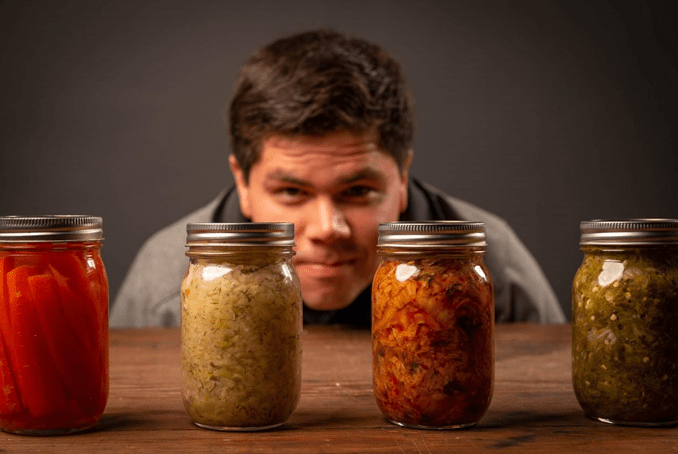South Korea is having quite a moment. From K-pop to major films and hit TV shows, the country is enjoying a boom in exporting its culture to the world. Obviously, any element of culture goes through fads and fashions, but the love for all things Korean has stuck around longer than most.
There is a definite buzz about everything that comes from South Korea these days. The national football team is one of the best in Asia, exporting its best players to the biggest leagues in the world. Stars such as Son Heung-min are known worldwide and feature regularly on sports TV shows and betting sites like the MyBookie sportsbook.
There seems no limit to how popular South Korea – and Korean culture – can become. One of the most enduring of the nation’s exports has been the food. From Chinese and Thai domination in overseas markets for years, it is now Korean dishes that rule the roost. But how did Korean food find its way around the world? And what are some of the favorite dishes?
Kimchi Revolution
One of the staples of the Korean food boom just happens to be the national dish. Kimchi can be found in just about every country around the world these days and there are actually hundreds of different types. But at its base, kimchi is salted and fermented vegetables.
It might be a surprise that something with such a strong taste could win over so many different cultures. But it may be the variety of kimchi available that has allowed it to become so popular. Chinese cabbage is the most common – and the potential for it to be used in so many different ways and different meals has helped this slice of Korea travel so far.
Korean Grills and Chicken
Another very popular Korean food is the range of grills and fried chicken. It could be argued that these food types are only popular because they are familiar to other cultures across the world that also cook their meat in this way. After all, barbecues can be found just about everywhere.
This is a good example of a type of Korean food that has been successfully exported mainly thanks to the overall love of Korea. When a part of a culture becomes fashionable, entrepreneurs will look to exploit that brand awareness and offer related products. Offering very recognizable foods with slightly different spices is a recipe for success.
Championing Local Food
The rise of Korean food has been a deliberate act. After the Korean War, the region experienced rice shortages. This led to a change in the local diet and government nutritionists started promoting what was referred to as a more ‘Western’ diet. The consumption of bread and meat was marketed as a way of becoming a more modern society and stimulating growth in the economy.
But intellectuals in the country led a backlash to this move to the West. The 1980s saw these groups highlighting and championing more local ingredients and ways of cooking. Over the next 20 years, South Korea’s economy developed at a phenomenal rate and the food that the movement highlighted had become more common. This promotion of national dishes had come at exactly the right time to ride the way of national success and could now be pushed beyond South Korea’s borders.
State Support
The move from a love of national and indigenous food to global consumption did not happen by accident though. This wasn’t a case of a Western chef ‘discovering’ kimchi on a trip to South Korea and then taking it back to an adoring public at home. Korean food is now found all over the world thanks to a highly orchestrated campaign by the South Korean government.
The 2007 Food Industry Promotion Act was specifically put in place to promote the nation’s food to the world. It could be said that its incredible success has outdone all expectations – but the general idea was for this to happen. Essential dishes and ingredients were noted down and then exported.
After 2010, there was an even bigger push to export the culture. The South Korean government actively promoted national food around the world and financed the opening of restaurants and even the training of chefs to cook in the Korean way. This was not the first time this had been done. Thailand’s government successfully exported its own national cuisine around ten years earlier. But the success of South Korea could be considered unparalleled.
Copycat Issues
One aspect of this success in exporting South Korean food, that perhaps should have been foreseen, is the way other countries have jumped on the bandwagon. The fact that there has been a rise in Chinese products being marketed as Korean abroad only shows just how far South Korea has risen as a global player.
If food companies from a major world economy like China feel the need to repackage their goods as being authentically Korean, then we are experiencing something quite amazing in South East Asia. Whether the Chinese companies involved move on to the next big thing in the future remains to be seen.
Can Korean Culture Stay Popular?
The love of Korean culture shows no sign of slowing down. It is not surprising that the media and food of the country have become so popular across the world, as there are significant Korean populations everywhere. It is more the way that it has won over other cultures so easily that has been remarkable.
It may help that Korean music and media can be so easily marketed by just simply adding a “K” for a catchy brand – such as K-pop and K-drama. But the food has crossed over in a much similar way. There may be a time when other cultures – possibly others from the same region of the world – become more fashionable. But for the moment it is the Korean brand that everyone wants.

